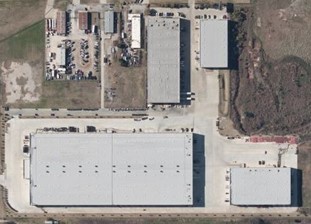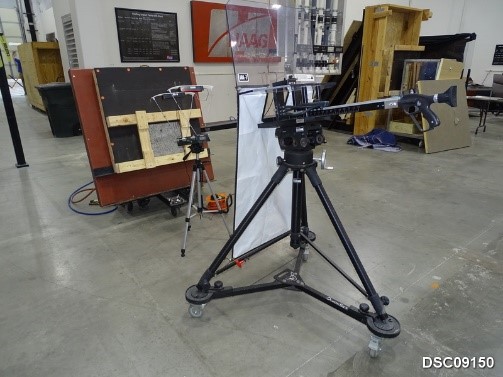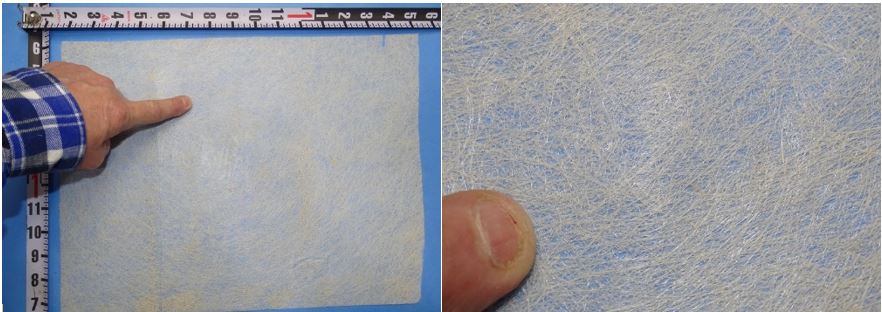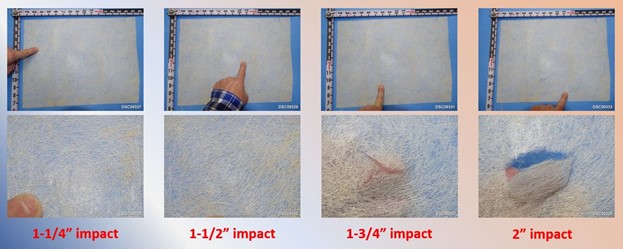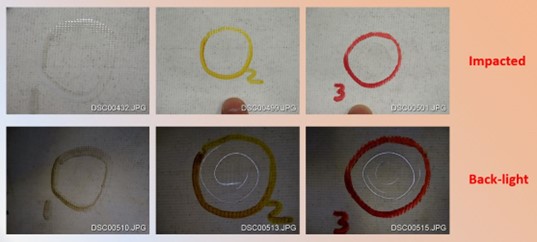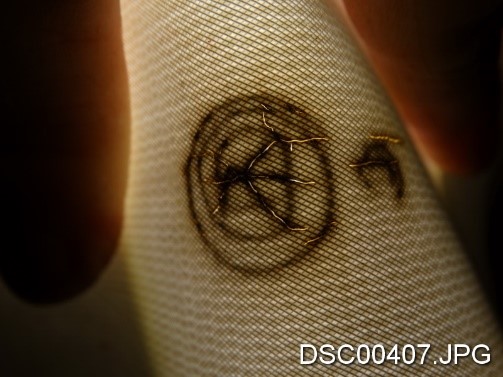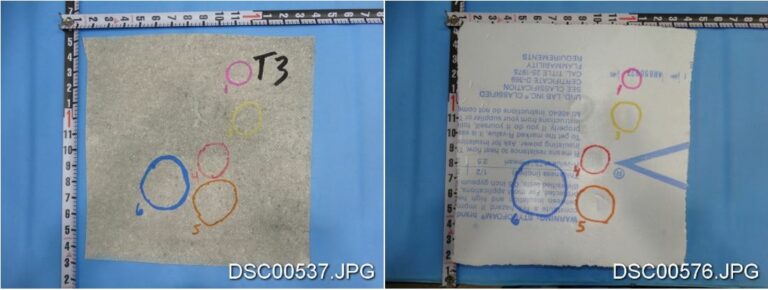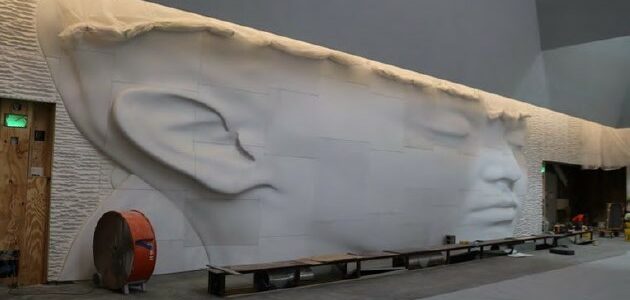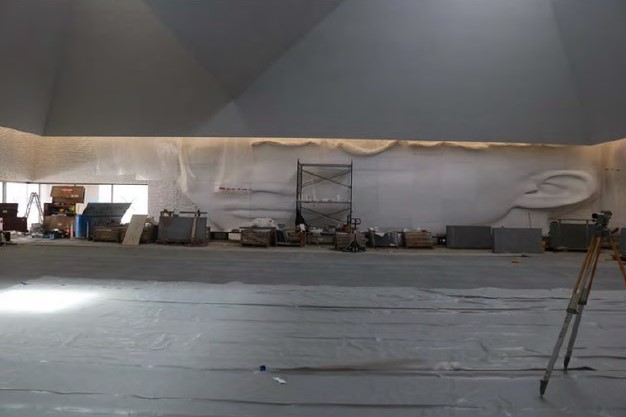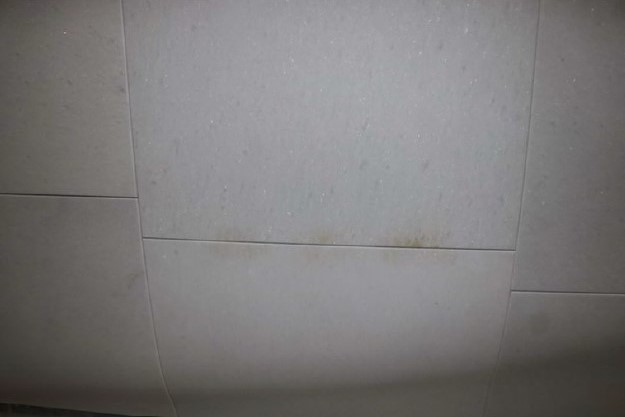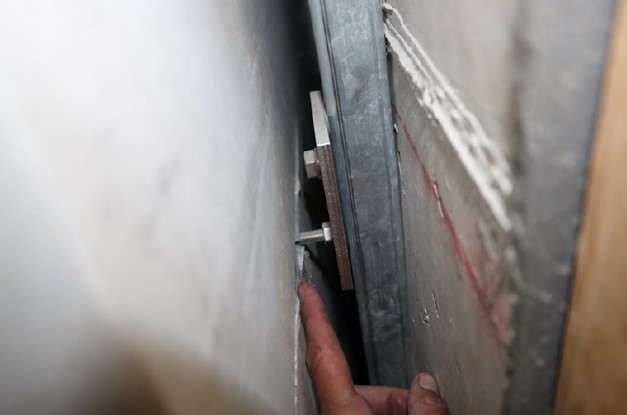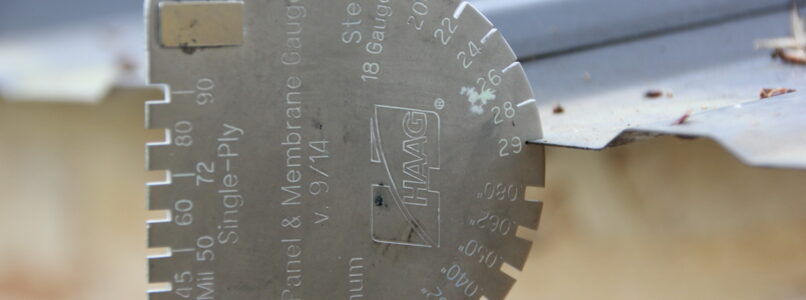Haag Panel & Membrane Gauge
By Amber Prom, P.E., and Steve Smith, P.E.
Confucius once said: You are only as good as the tools on your belt… or something like that…
Whether you’re an engineer, insurance adjusters, roofing consultant, or contractor, if you commonly find yourself collecting data out in the field, you are likely relying on a kit of tools to assist you. From tape measures, cameras, levels, or chalk, the precision and reliability of your tools is crucial. If your tools are unreliable, you can end up with an incorrect assessment and/or cost estimate.
The Haag Panel & Membrane Gauge (HPMG) is a unique tool that every field investigator should have at the ready when inspecting metal roofing panels or single-ply roofing. While many inspectors measure metal roofing panel thickness using a standard sheet metal gauge, the HPMG has been carefully designed by Haag’s Research & Testing division to accurately measure most every metal roofing panel you will encounter in the field, accounting for the thickness of any coating that may be present.

All steel roofing panels have either a metallic coating (galvanized or Galvalume®), or a paint coating. Measuring coated metal roofing panels with a standard sheet metal gauge often gives artificially thick readings, making a determination of gauge/thickness incorrect, and resultantly the associated cost estimate inaccurate. Moreover, the HPMG is fabricated using high precision manufacturing methods and the gap thicknesses are quality checked by an ISO 17025 certified calibration laboratory, making the tool extremely accurate. And as if that isn’t enough, the HPMG can also measure the thickness of single-ply roofing membranes and common thicknesses of aluminum roofing panels as well. It even has a magnet to help you differentiate steel from other metal types.
Features of the HPMG include:
- Standard steel roofing panel thickness slots ranging from 29 to 18 gauge.
- Standard aluminum roofing panel thickness slots ranging from 0.18 to 0.80 inch.
- Standard single-ply membrane thickness slots ranging from 45 to 90 mil.
- A built-in magnet to assist determining if a metal panel is made of steel vs aluminum.
- A machined hole to attach the HPMG to a clip or lanyard.
- Straight edge to visually demonstrate dent depth.
- Sturdy metal construction to resist wear, bending, or corrosion.
- Compact size to fit into small pockets and not obstruct images when taking photographs.
- Unique shape to help measure in tight places (like panel ends extending into gutters).
- The HPMG can be easily photographed when documenting your file.
- Designed and manufactured in the United States.
The HPMG is the top-of-the-line tool when it comes to determining roofing panel and membrane thicknesses accurately in the field. Without it, your thickness measurements could be inaccurate, adding significant costs to your estimates, resulting in higher than needed bids, or more expensive claim settlements. Don’t put your quality and reputation on the line. Consider adding an HPMG to your gear and take your measurements with confidence backed by Haag.
***

Amber Prom, P.E., is Haag’s Director of Curriculum. She is based out of the Denver area. Ms. Prom is a Registered Professional Structural Engineer with 16 years’ experience in structural design, project management, forensic engineering, and engineering management/training. Amber previously worked as Professional Development Manager, Project Engineer/Technical Lead, and Principal Consultant for 8 years. She was responsible for training all new hires and providing continuing education/training for existing experts within the Civil/Structural and Building Consultant Divisions. She built this training program from the ground up for 100+ experts throughout the U.S. and Canada. As a Project Engineer/Principal Consultant, she conducted forensic engineering investigations related to building components which had failed, become damaged, did not operate/function as intended, or were constructed deficiently. She was also the Technical Lead for processes, including performing field investigations, documenting/photographing, equipment use, etc.

Steve R. Smith, P.E., is Director of Research & Testing and a Principal Engineer with Haag Global. He completed nuclear power training with the United States Navy in 1994. He was honorably discharged in 1998 and went to work for Haag Engineering Co. as Senior Laboratory Technician. Steve has performed hundreds of hail impact tests on a variety of products including roofing, siding, and automobiles. He graduated from the University of Texas at Arlington in 2005 with a Bachelor’s degree in Mechanical Engineering and is a member of the American Society of Mechanical Engineers, the Society of Automotive Engineers, and the National Association of Fire Investigators. Steve has inspected and assessed damage to a number of roof systems, including single-ply systems, composition shingles, cedar shake and shingles, concrete tiles, slates, and built-up roofing. As Director of Research & Testing, Mr. Smith oversees all testing projects, protocols, and manages Haag’s accreditation. Mr. Smith is based at Haag headquarters in Flower Mound, Texas. |
|
One Year After the Collapse of Champlain Towers South in Surfside, Florida
By Sasa Dzekic, M.Eng., P.Eng.
Early in the morning on June 24, 2021, a portion of the Champlain Towers South condominium building in the Town of Surfside, Miami-Dade County, Florida collapsed suddenly. With a death toll of 98 people, the Surfside tragedy is one of the deadliest structural collapses in North America in decades.
The following is a brief summary of the key developments over the past year.
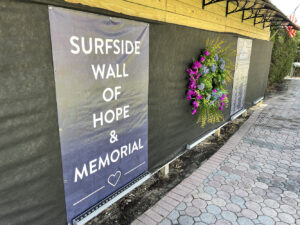
Investigation
The National Institute of Standards and Technology (NIST) started their investigation within days after the collapse under the authority of the National Construction Safety Team Act. They were the only team permitted to gather evidence at the site during the search and rescue operations, and the removal of debris. NIST’s involvement then included remote sensing and data visualization, evidence tagging for extraction and preservation, and cataloguing of the salvaged building evidentiary debris. They also established a data portal for the public to submit any relevant historical photos, videos, or other documentation related to the incident. NIST has also been conducting interviews of residents, first responders, family members, and others.
Investigations and analyses by multiple expert teams, including Haag, have been underway. The initial site examination was in early September 2021. Joint protocol for testing and materials sampling was subsequently agreed upon, and access permitted by the Receiver. The field work commenced in February 2022.
One year later, it is still too early to reach any conclusions on exactly what led to the massive structural failure. Forensic engineering investigations into the cause and liability will continue for months, possibly years.
Legal Action
Several legal actions have been initiated following the collapse. Some settlements have been reached, for a total over $1 Billion. Compensations will be paid to the victims’ families and surviving residents of the Champlain Towers South units.
Regulatory Changes
The collapse of the Drug Enforcement Agency office building in Miami in 1974 ultimately led to changes to local building codes in Miami-Dade and the neighboring Broward Counties, to include 40-year Recertification Program requirements. Subsection 8-11 (f) requires the owners of all buildings other than “minor buildings”, which have been in existence for 40 years or longer to have the building inspected and “recertified” by a Professional Engineer or an Architect registered in the State of Florida.
The Champlain Towers South building was reaching 40 years in 2021. The recertification process had been initiated and the building was inspected, however no structural repairs commenced prior to the collapse.
Following the collapse, the state and local governments and professional organizations have reviewed the shortcomings in the 40-year Recertification Program.
American Council of Engineering Companies of Florida and the Florida Engineering Society assembled a coalition of engineers and building professionals. They presented their “Florida Building Professionals Recommendations” in September 2021.
In December 2021, the Miami-Dade County Grand Jury, after they had conducted an investigation into the policies, procedures, protocols, systems and practices associated with the collapse, issued a report with their “recommendations to make buildings safer.”
On May 24, 2022, the Florida House of Representatives Appropriations Committee approved “Bill 5-D: Condominium and Cooperative Associations.” The Bill had been previously approved by the Senate. Bill 5D includes, amongst others, the following reforms to increase the safety of condominiums:
- Requires inspections for all condominiums and cooperative buildings three stories or higher. For buildings within 3 miles of the coast, phase one inspections must occur 25 years after initial occupancy and every 10 years after. For all other buildings, phase one inspections must occur 30 years after initial occupancy and every 10 years after;
- If a phase one inspection reveals substantial structural deterioration, a more intensive inspection is required;
- Requires condominiums and cooperatives to conduct structural integrity reserve studies for buildings three stories or higher, to ensure the funding necessary for future structural repairs is available and prohibits a waiver of funding for certain structural reserves;
- Increases transparency by requiring all structural inspections reports and reserve studies to be part of the association’s official record and must be provided to potential purchasers of a unit.
NIST’s investigation may eventually lead to updates to building codes, specifications, and regulations at the federal level across the U.S.
***

Sasa Dzekic, M.Eng., P.Eng., is the Practice Lead, Civil/Structural Engineering for Haag Canada. Mr. Dzekic has over 30 years of professional experience in structural engineering involving a wide range of building projects. He specializes in investigation and assessment of failures of buildings and structural systems, and/or their components, and evaluation of structural damage. Mr. Dzekic has conducted structural forensic investigation and assessment, preparation of reports, and expert testimony. He has performed planning and on-site advice with respect to unsafe building conditions and demolition, including temporary measures for structural securing of the buildings. He has conducted structural analysis and design of concrete, steel, wood and masonry structures, review of drawings for building permit purposes, and field review during construction.
For more information on Mr. Dzekic or Haag Canada’s areas of expertise, please visit haagcanada.ca.
.
.
– |
